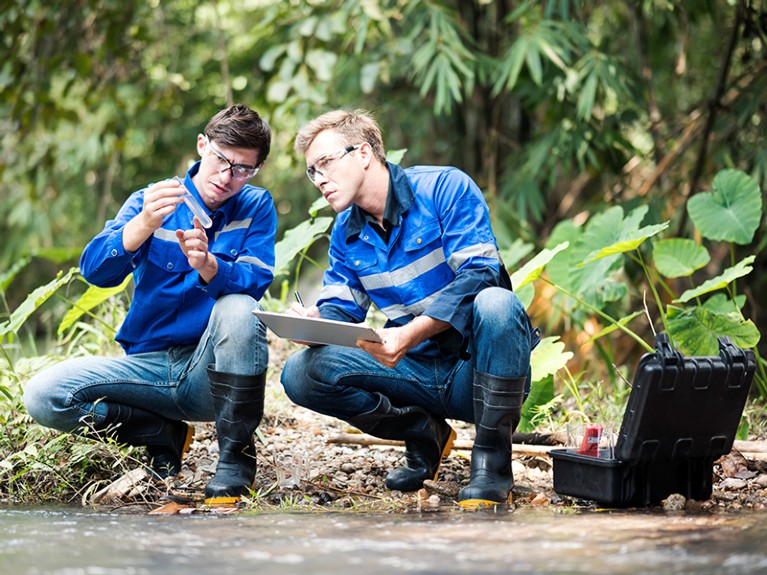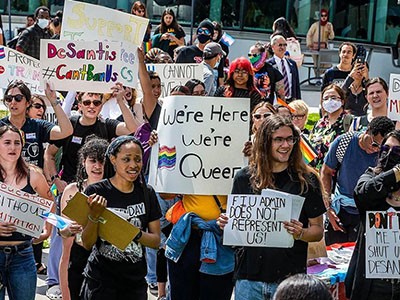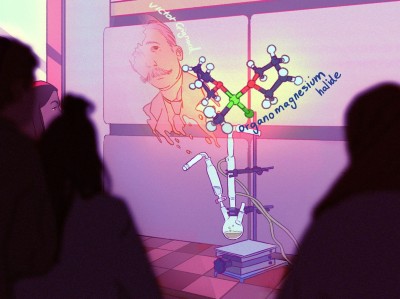A report from the US National Science Foundation finds that the majority of science and engineering jobs are held by white men.Credit: Getty
Women, members of minority ethnic groups and those with disabilities continue to be under-represented in positions across the US science, technology, engineering and mathematics (STEM) workforce, according to a report by the US National Science Foundation (NSF).
The report finds that although the proportions of jobs held by these groups rose overall between 2011 and 2021, they remained lower than the groups’ representation in the nation’s population. Women, for example, comprise 51% of the US population but represent just 35% of employees in the US STEM workforce. The findings relate to the academic, industry, non-profit and government sectors, including roles such as managers and technicians, and those in related areas such as health care.
White men dominate science and engineering positions in the nation, the report finds; nearly three-quarters of people in these roles identify as male. Almost two-thirds identify as white.
Just one-fifth of the science and engineering workforce identifies as Asian, 8% as Hispanic or Latino, 8% as African American and 0.4% as American Indian or Alaskan Native. Although people with at least one disability represent about one-quarter of the US population, they accounted for only 3% of those in science and engineering positions. The proportion of these workers in the general STEM workforce has remained unchanged in the past decade.
Barriers and disparities
Ableism, or discrimination against people with disabilities, along with continuing inaccessibility of physical and virtual spaces, could bar scientists with disabilities from seeking or getting positions in their field, says Bonnielin Swenor, director of the John Hopkins University Disability Health Research Center in Baltimore, Maryland. She notes that barriers are exponentially greater for scientists with disabilities who are also members of other under-represented groups. “These disparities are both a cause and consequence of inaccurate, but common, views that people with disabilities don’t belong in STEM, are incapable of being scientists and are overlooked as STEM leaders,” she says.
Academics fight moves to defund diversity programmes at US universities
Under-representation in STEM could result from a scarcity of role models, says Johnna Frierson, associate dean for equity, diversity and inclusion for the basic sciences at Duke University School of Medicine in Durham, North Carolina. She sees the problem as a cycle in which lack of representation leads to continued lack of representation. “If one’s environment doesn’t have robust diversity in representation, it can send an implicit message that individuals from under-represented groups do not belong and can’t be successful in those spaces,” she says.
The NSF report also finds that earnings disparities in science and engineering (S&E) positions persist between different groups. In 2020, the median annual wage for all employees in the sector was US$89,990. But men in these fields earned around $25,000 more than their female counterparts ($99,923 versus $75,562). The median salary for white S&E workers was $89,977. For Asian S&E workers, it was $107,150.
Representation and inclusion
The report also finds that female scientists hold almost two-thirds of positions in the social sciences, including psychology, sociology and anthropology, but fewer than half in biological, agricultural and related disciplines. They continue to be under-represented in the physical and related sciences, including physics and chemistry (33%), computer and mathematical sciences (26%) and engineering (16%). White people also take up a majority of positions in each discipline. Among computer and mathematical scientists, 57% identify as white. The other three disciplines have similar numbers: 63% of biological, agricultural and other life scientists identify as white, as do 69% of engineers and 71% of those in physical sciences.
Chemistry course corrections tackle bias
Some have criticized the report for its lack of data on people from sexual and gender minorities (LGBT+) in the STEM workforce. Ramón Barthelemy, a physicist at the University of Utah in Salt Lake City, who has studied equity and inclusion in physics, says that his work on LGBT+ faculty members, and on LGBT+ physicists in particular, has shown concerning trends, including exclusionary behaviours and negative workspace environments1. Those trends, he adds, are particularly worrisome for those in the community who also identify as women or as a person of colour. “Without proper representation in data,” he says, “we aren’t being included in metrics on diversity, equity and inclusion, further marginalizing the community.”
NSF representatives say that the agency is integrating questions about the LGBT+ community into its surveys, adding that it hopes to publish its analysis of the data in a few years.





More News
Author Correction: Bitter taste receptor activation by cholesterol and an intracellular tastant – Nature
Audio long read: How does ChatGPT ‘think’? Psychology and neuroscience crack open AI large language models
Ozempic keeps wowing: trial data show benefits for kidney disease